Overview of Cyclamen
Cyclamen is a colorful florist plant traditionally sold during the winter. These are hybrids of Cyclamen persicum, one of 23 species in the genus Cyclamen. These plants in the family Primulaceae are native to alpine woodlands in parts of southern Europe, western Asia and North Africa near the Mediterranean.
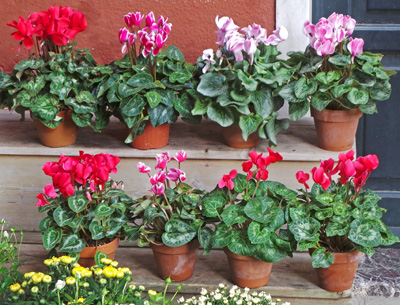
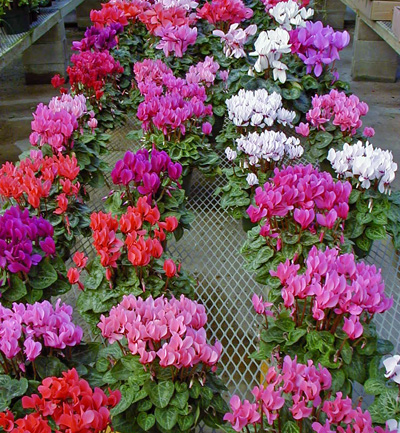
Many cultivars have been bred from the species, especially in England, Germany, and the Netherlands, to increase flower size, expand the color range and change petal form. Today these cultivars are mass produced as pot plants using hybrid seed.
C. persicum is a tender plant which will not tolerate frost and blooms in the winter and is therefore grown primarily as a houseplant. When purchasing cyclamen, select a plant with lots of buds that are just starting to open and sturdy, succulent leaves. The rounded or heart-shaped leaves are either dark green or marbled with white or silver. On some cultivars the margins are slightly toothed or lobed, or the underside of the leaves may be purplish. The attractive 1 to 5 inch leaves form a mound up to 8 inches tall.


Cyclamen blooms for up to three months. The flowers are suspended above the attractive foliage on slender stems and many people think they resemble butterflies in flight.
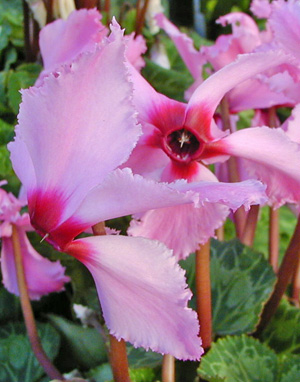
The five reflexed (curved back) and twisted petals are joined in a short tube at the base of the flower. Flower color ranges from pure white through all shades of pink, lavender and red. Cultivars have been developed that produce double flowers, and others that have a thin white edge on the petals (picotee), stripes, or ruffled edges. Some miniature types have standard size leaves, but tiny, lightly scented flowers.

Cyclamen are fairly easy to grow but it may be difficult to provide the right conditions to get them to rebloom. Many people treat florist’s cyclamen as a short-lived, temporary indoor plant.
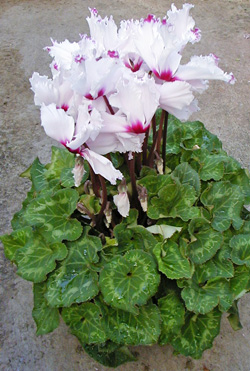
Being adapted to a Mediterranean climate, cyclamen comes into growth in the autumn, flowers in winter or early spring (the rainy season) and goes dormant for the entire summer (when it’s hot and dry).
General Care of Cyclamen
Cyclamen prefer bright, indirect light and need cool temperatures. An east window is often a good spot to keep a cyclamen but in the winter in Wisconsin a southern exposure may be better. Ideal daytime temperatures are 60 to 65 ºF and night temperatures around 50 ºF, although today’s hybrids can be maintained over a wider temperature range with good performance. Individual flowers as well as the blooming season will be extended if the plants can be kept cool. To encourage continuous flowering, remove any spent blossoms by twisting the stem and pulling sharply to remove it cleanly from the base.
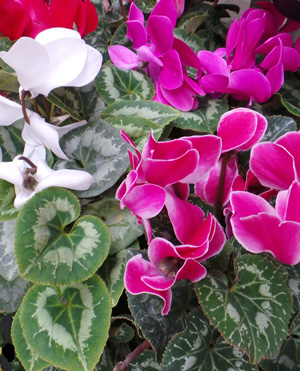
These plants also need high humidity and moist soil to continue blooming. Water cyclamen thoroughly when the soil looks and feels dry on the surface. Avoid watering the crown or center of the plant, which may rot if it remains too wet. Many people prefer to bottom water, or stand the pot in water for 15 minutes. Allow the soil to almost dry out before watering again. Plants that are kept too moist or too dry will develop yellow leaves (although this and bud blasting or aborting may also be caused by hot, dry conditions or insufficient light). The foliage should remain firm and erect; if it seems soft, the plant probably needs watering. Set the pot on a tray of wet gravel to provide extra humidity, and keep the plants away from warm drafts. Cyclamens do need fertilizer, but too much promotes overly lush growth that is more susceptible to disease. Use a low-nitrogen fertilizer or houseplant food for blooming plants every two weeks when growing actively.
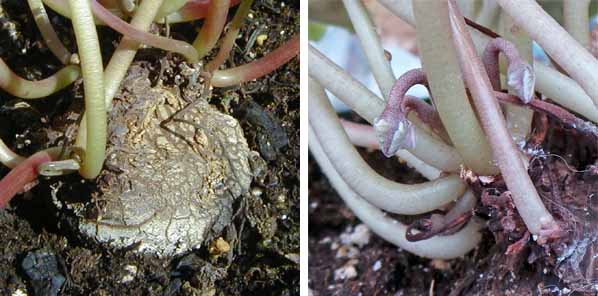
Cyclamen leaves and flowers grow in a rosette from a tuberous base. In pots, the tubers will grow up to 6 inches in diameter. In late spring the plants stop blooming and go into dormancy for two to three months. At this time their leaves begin to fade and drop off. Reduce watering and fertilization at this time. Dormant cyclamen can be moved outside for the summer, but don’t let media remain wet while leafless, and be sure to bring it inside before first frost. Alternatively, gradually withhold water after the flowers finish blooming. When the leaves are withered, remove the tuber from the soil and store it in dry vermiculite at about 50 ºF for 6 to 12 weeks. After summer dormancy, repot the tuber in well-drained potting mix with the upper half of the tuber above the surface of the medium. Begin watering again when the tuber starts forming new leaves, and fertilize until flower buds form.
Cyclamen do not have many pests, but can occasionally be attacked by aphids, mealybugs, spider mites, or thrips. These can be controlled with insecticidal soap or pesticides labeled for use on houseplants. Plants infested with cyclamen mite are best discarded, since this pest is extremely difficult to control.
– Susan Mahr, University of Wisconsin – Madison
Last Update: Bruce Spangenberg, UW-Madison Extension 2025


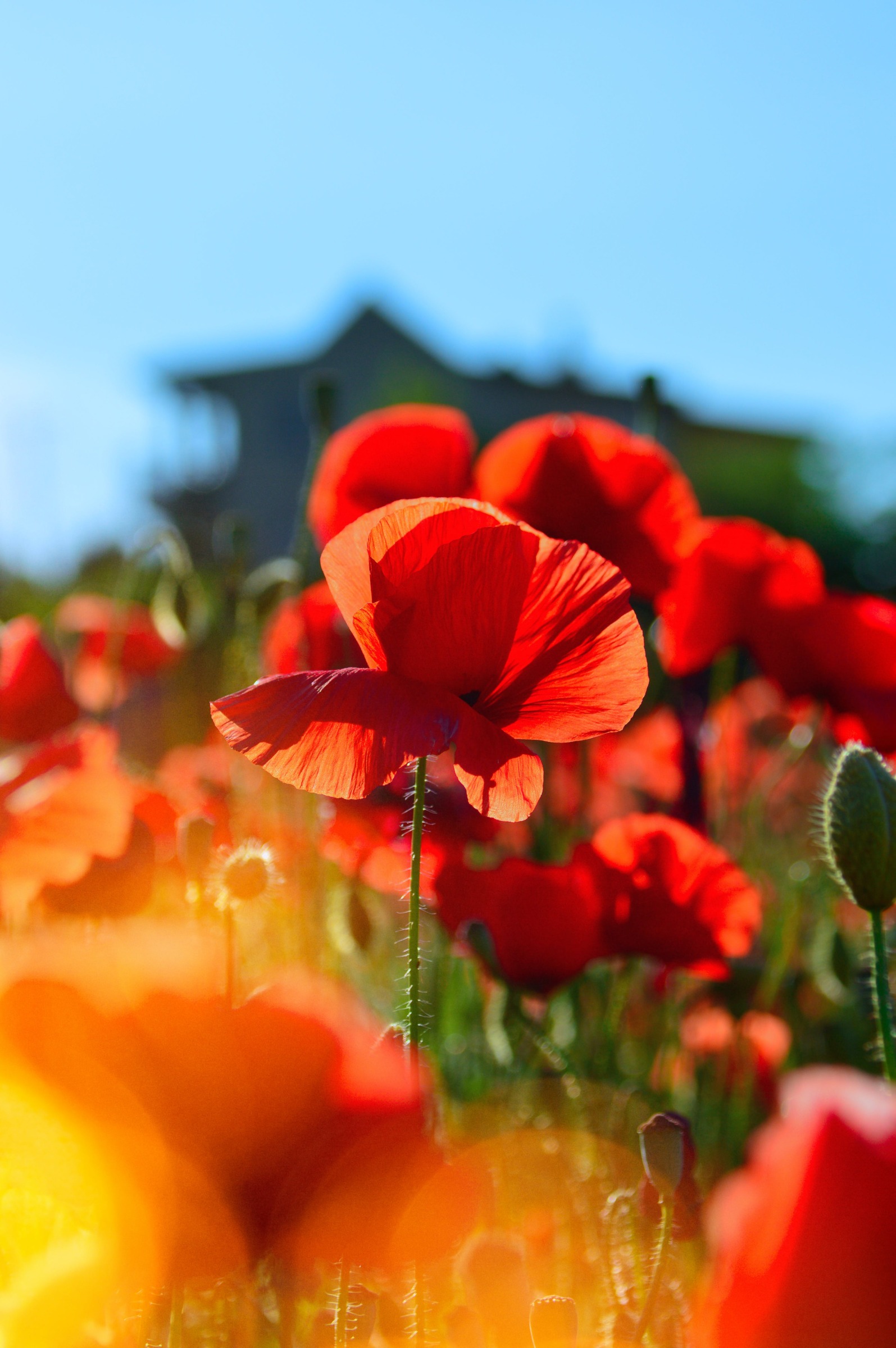
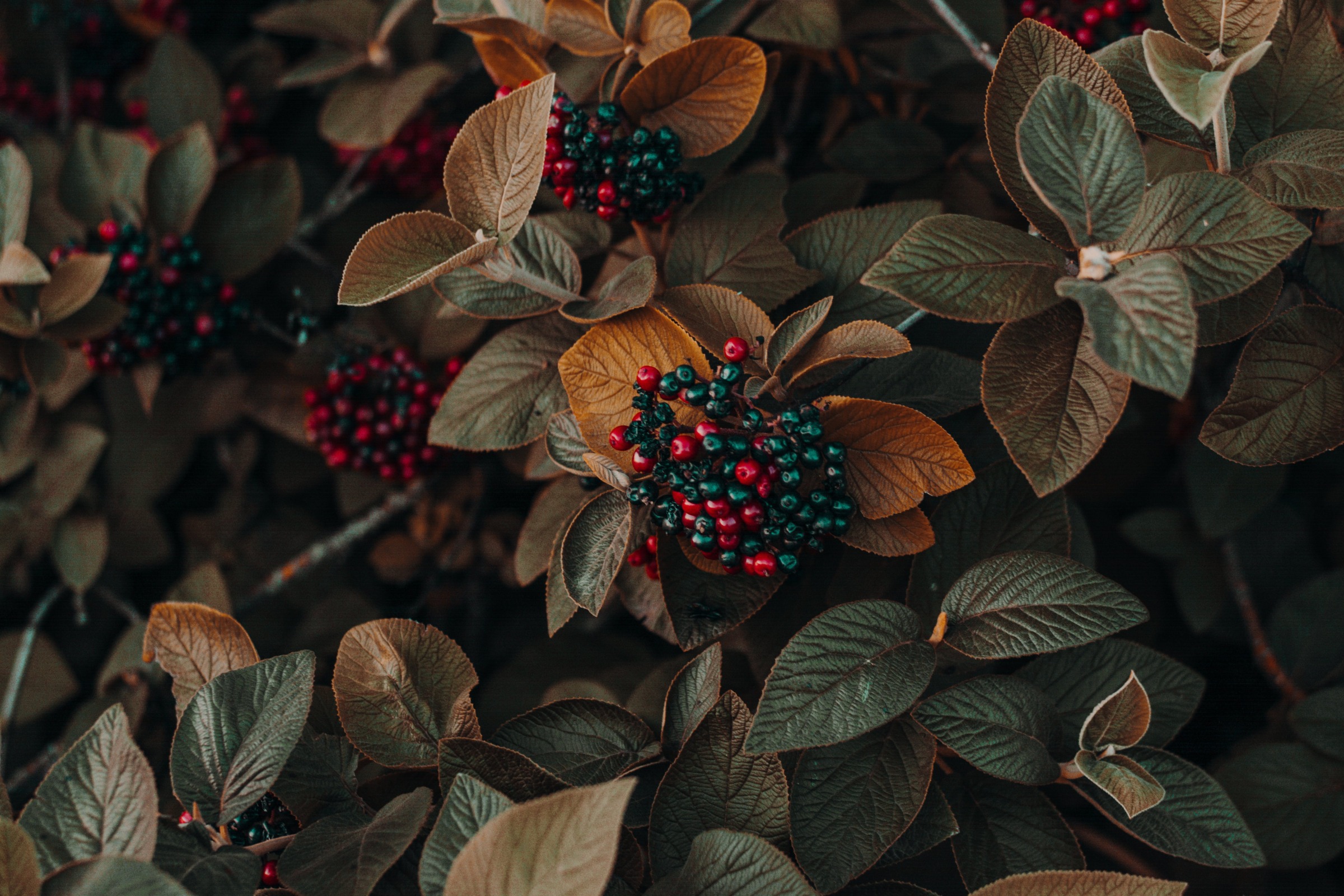
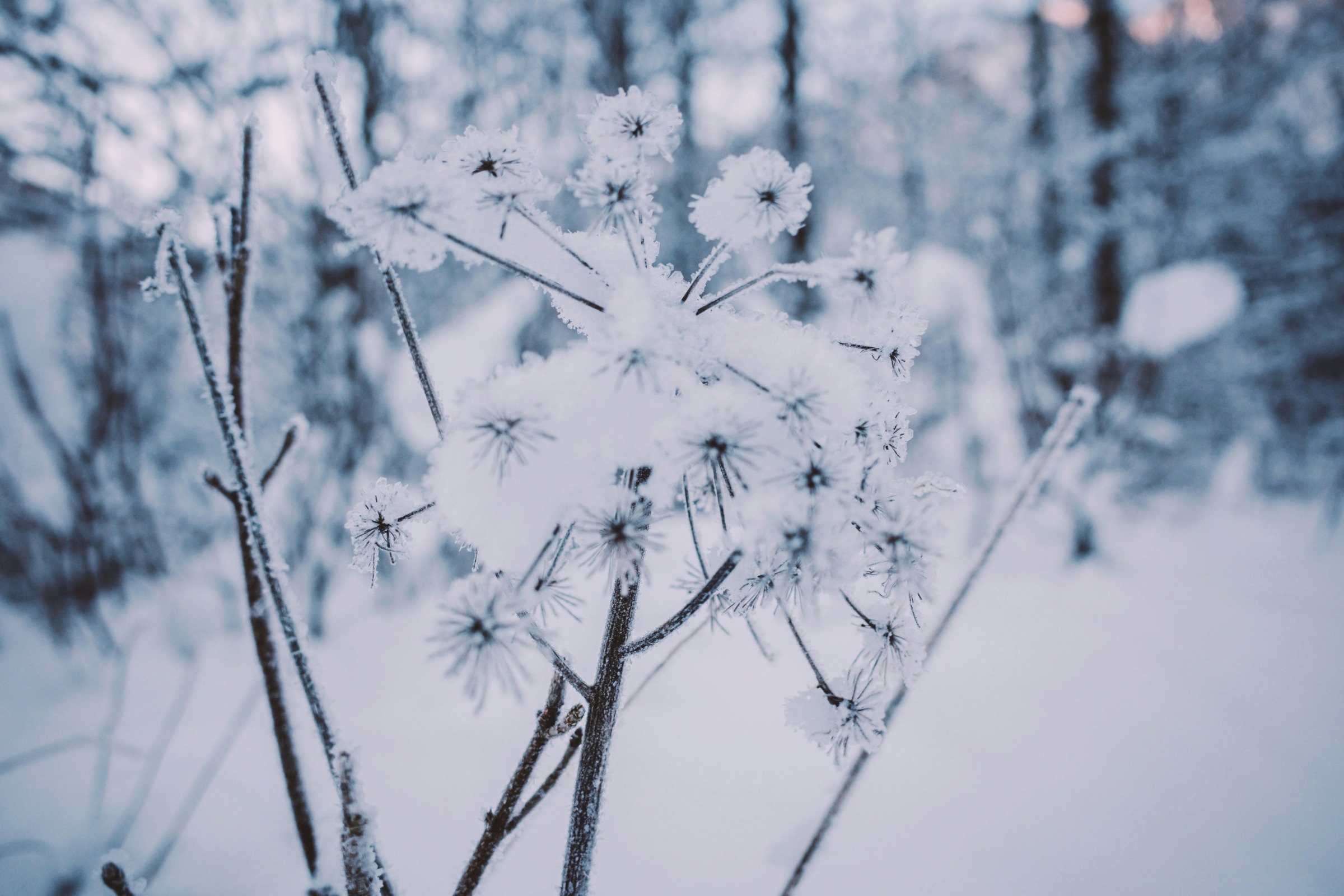
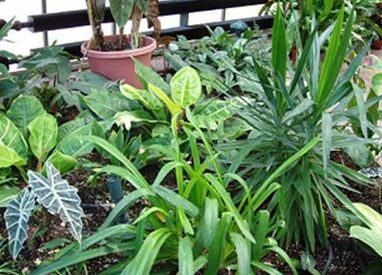 Houseplant Care
Houseplant Care ▶ Watch: Maintaining Your Festive Houseplants
▶ Watch: Maintaining Your Festive Houseplants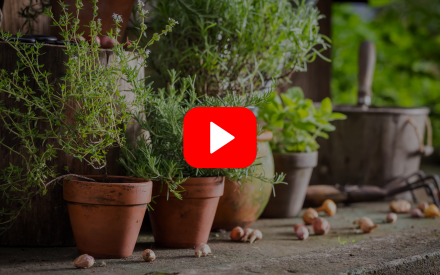 ▶ Watch: Bringing the Garden Inside
▶ Watch: Bringing the Garden Inside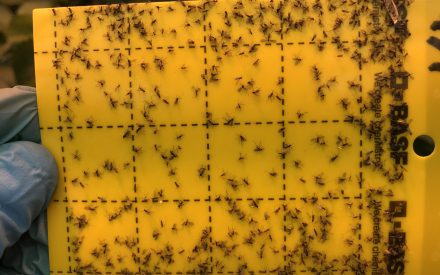 Fungus Gnats on Houseplants
Fungus Gnats on Houseplants


